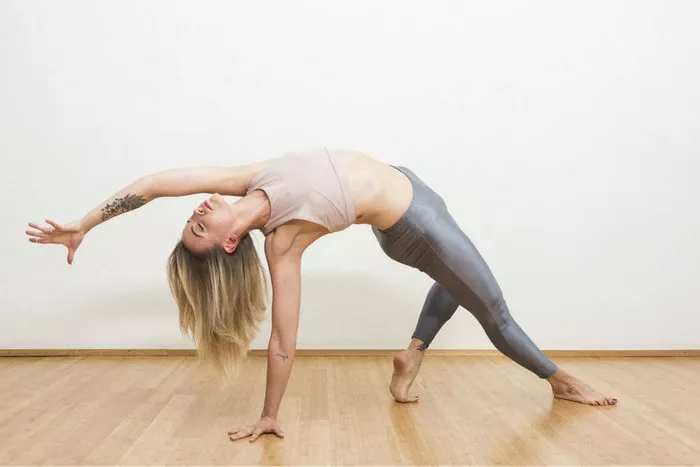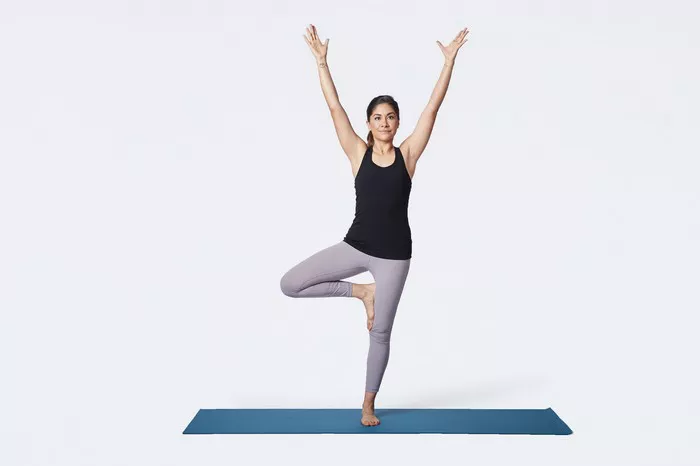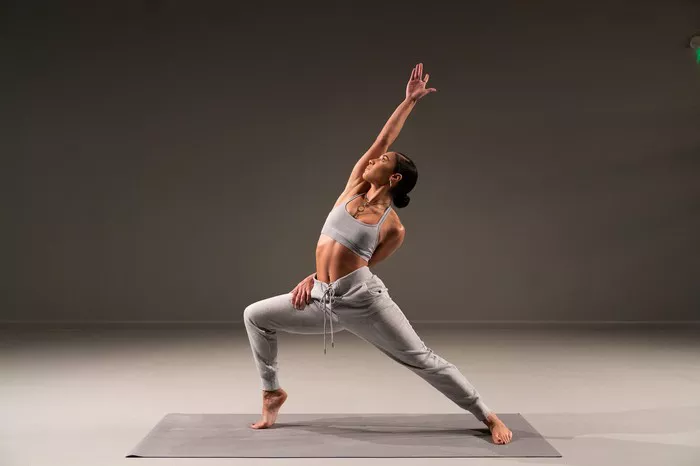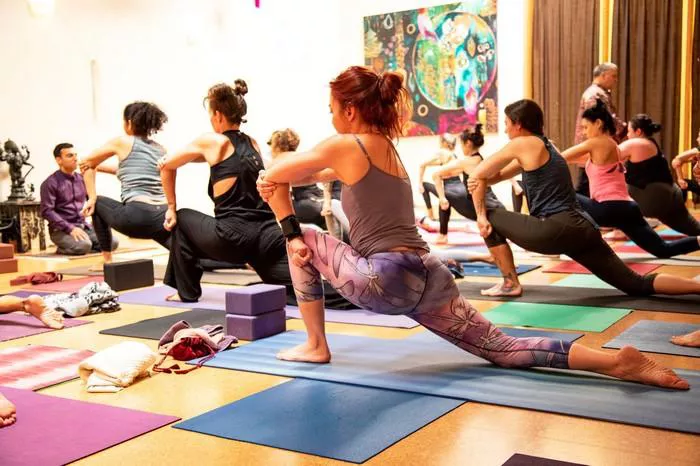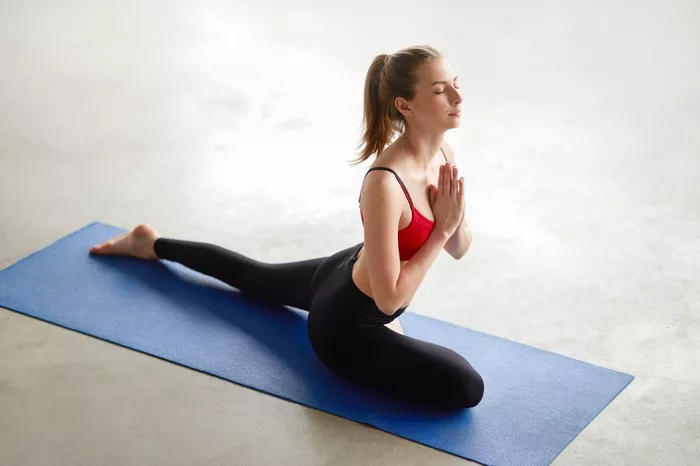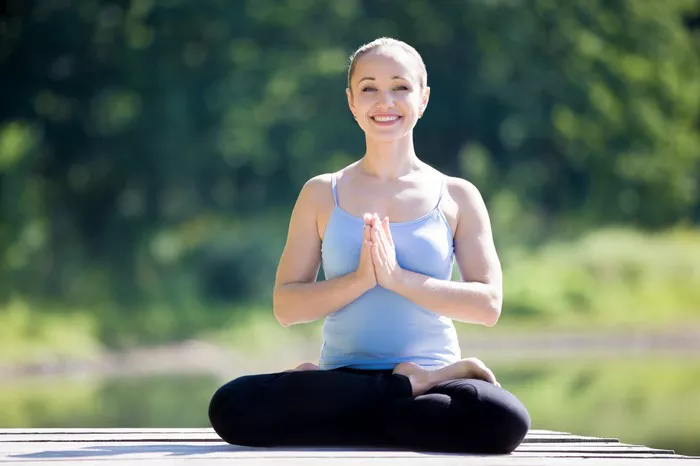The Pigeon Pose, known in Sanskrit as Eka Pada Rajakapotasana, is one of the most popular and effective poses in yoga. It is revered for its deep stretch and its ability to release tension in the body, particularly in the hips, glutes, and thighs. The Pigeon Pose offers a variety of benefits that make it an essential component of many yoga practices. In this article, we will delve into the goals of practicing the Pigeon Pose, including its physical, mental, and emotional benefits, and how it can be used to enhance overall well-being.
Understanding the Pigeon Pose
Pigeon Pose is a seated posture that involves one leg extended straight behind the body and the other leg bent in front, with the shin placed parallel to the mat or at an angle. The torso remains upright, and the hips are rotated forward and downward, creating a deep stretch along the front of the extended leg and the hip flexors. The name “Eka Pada Rajakapotasana” translates roughly to “One-Legged King Pigeon Pose,” with “Eka” meaning one, “Pada” meaning foot or leg, “Raja” meaning king, and “Kapota” meaning pigeon.
The posture resembles the shape of a pigeon with one wing extended outwards and the other tucked beneath. In its more advanced form, the pose can include a deep backbend, with the hands reaching for the back foot to enhance the stretch and improve flexibility. However, even in its basic form, Pigeon Pose offers numerous benefits for both beginners and advanced practitioners.
Goals of Practicing the Pigeon Pose
There are several significant goals and benefits to be gained from practicing the Pigeon Pose. These include the improvement of physical flexibility, mental focus, emotional balance, and overall body awareness.
1. Increasing Flexibility in the Hips
The most prominent goal of Pigeon Pose is to increase flexibility in the hips. The posture deeply stretches the hip flexors, glutes, and thighs, which are often tight due to prolonged sitting, lack of movement, or certain physical activities.
The hip flexors, located at the front of the hips, are responsible for lifting the leg and bringing the knee towards the chest. When these muscles become tight, they can lead to discomfort and restricted movement. The Pigeon Pose targets these muscles by opening up the hip joints, allowing for greater mobility.
Additionally, the outer hip muscles, such as the piriformis and gluteus maximus, are also stretched. These muscles tend to tighten in individuals who engage in repetitive activities such as running, cycling, or sitting for extended periods of time. The Pigeon Pose helps to alleviate tightness in these areas, reducing the risk of injuries and improving the overall range of motion in the hips.
2. Releasing Tension in the Lower Body
Many individuals experience tension in their lower bodies, especially in the hips, legs, and lower back. Tension in these areas can cause discomfort, limit mobility, and contribute to stress and fatigue. By engaging in Pigeon Pose, practitioners can effectively release tension and create space in the body.
The deep stretch provided by Pigeon Pose helps to loosen tight muscles in the glutes, thighs, and lower back, which are commonly affected by stress, poor posture, and daily activities. Releasing tension in these areas not only relieves physical discomfort but also promotes better posture and alignment.
Additionally, the act of stretching and lengthening these muscles can enhance blood circulation, ensuring that oxygen and nutrients are delivered to the tissues more efficiently. This can improve overall muscle function, leading to less stiffness and a greater sense of vitality.
3. Enhancing Spine Flexibility and Posture
While the primary focus of the Pigeon Pose is on the hips and legs, the pose also encourages spinal flexibility and good posture. When practicing Pigeon Pose, it is essential to maintain an upright torso and engage the core muscles. This alignment promotes spinal extension, helping to lengthen the spine and counteract the effects of slouching or poor posture.
As the body deepens into the pose, the spine may naturally curve, opening up the chest and encouraging better alignment. This process helps to alleviate the discomfort often caused by poor posture, such as tension in the shoulders and upper back.
For practitioners who spend long hours sitting at a desk or engaging in sedentary activities, incorporating Pigeon Pose into their practice can help reverse the effects of poor posture and create a sense of balance and alignment in the body.
4. Cultivating Emotional Release and Stress Relief
The Pigeon Pose is not only beneficial for the physical body but also has a profound impact on emotional and mental well-being. Many yoga practitioners report that Pigeon Pose can evoke deep emotional release and bring a sense of calm and relaxation.
This emotional release can be attributed to the deep stretching and opening of the hip area, which is known to be a storehouse for emotional tension. The hips, especially the muscles of the pelvis and lower back, can hold onto stress, trauma, and unresolved emotions. As the body opens and stretches in Pigeon Pose, these emotions may surface, providing an opportunity for practitioners to acknowledge and release them.
In addition to emotional release, Pigeon Pose promotes deep relaxation. The pose encourages mindfulness and presence, allowing individuals to connect with their breath and the sensations in their body. By focusing on the breath and relaxing into the stretch, practitioners can activate the parasympathetic nervous system, which helps reduce stress and anxiety.
5. Improving Balance and Body Awareness
One of the often-overlooked benefits of Pigeon Pose is its ability to improve balance and body awareness. As a balancing posture, Pigeon requires focus and concentration to maintain proper alignment and prevent collapsing into the lower back or overstretching the hips.
To maintain balance in the pose, practitioners must engage the core muscles, lengthen the spine, and keep the hips square. This fosters a deeper connection to the body and encourages practitioners to cultivate mindful awareness in their practice. Over time, this enhanced body awareness can carry over into daily life, improving posture, coordination, and the ability to respond to physical discomfort.
6. Supporting the Function of the Pelvic Region
The Pigeon Pose is a powerful posture for supporting the health of the pelvic region. By opening the hips and stretching the surrounding muscles, Pigeon Pose can alleviate discomfort in the pelvis and lower abdomen. For women, it may help with issues related to menstruation, such as cramps and bloating, by improving circulation in the pelvic area.
The pose also strengthens the muscles of the pelvic floor, which play an essential role in supporting the bladder, bowel, and reproductive organs. As the pelvic region is engaged and stretched, practitioners may notice improved muscle tone and strength in this area, which is important for maintaining overall pelvic health.
7. Providing a Gateway to Other Poses
Pigeon Pose can serve as a valuable preparatory pose for more advanced postures, particularly those that involve deeper hip openers or backbends. Many advanced asanas, such as Lotus Pose (Padmasana) or King Pigeon Pose (Kapotasana), require significant flexibility and mobility in the hips and spine.
By practicing Pigeon Pose regularly, yoga practitioners can work towards achieving the necessary flexibility and openness in the hips to perform these more challenging poses with greater ease. Additionally, the grounding and centering effects of Pigeon Pose can help prepare the mind for more complex poses that require focus and concentration.
How to Practice Pigeon Pose Safely
While Pigeon Pose offers numerous benefits, it is essential to approach it with caution to avoid injury. The deep stretch can place a significant amount of pressure on the hips and lower back, so it is important to listen to your body and avoid forcing the pose. Here are some tips for practicing Pigeon Pose safely:
Warm Up: Begin with a thorough warm-up to prepare the body for deeper stretches. Focus on opening the hips and lengthening the spine with gentle stretches like Downward-Facing Dog, Cat-Cow, or Low Lunge.
Mind the Hips: Keep your hips square and level, as misalignment can strain the lower back. If your hips are higher than your knee in the bent leg, use a cushion or block to support the hips.
Lengthen the Spine: Focus on lengthening the spine rather than collapsing forward. Imagine creating space between your ribs and your hips to avoid rounding the back.
Use Props: If you have tight hips, knees, or lower back, use props such as blankets, blocks, or cushions to provide support and make the pose more accessible.
Breathe: Breathe deeply and stay mindful of your breath. Use the breath to help release tension and deepen the stretch gradually.
Conclusion
The goal of the Pigeon Pose is multifaceted, encompassing physical, emotional, and mental benefits that contribute to a balanced and well-rounded yoga practice. By increasing flexibility, releasing tension, enhancing posture, and cultivating emotional awareness, Pigeon Pose provides a pathway to greater well-being and self-awareness. With its many advantages, the Pigeon Pose is a powerful tool for yogis of all levels and is sure to become a cherished part of your practice.
Related topics


